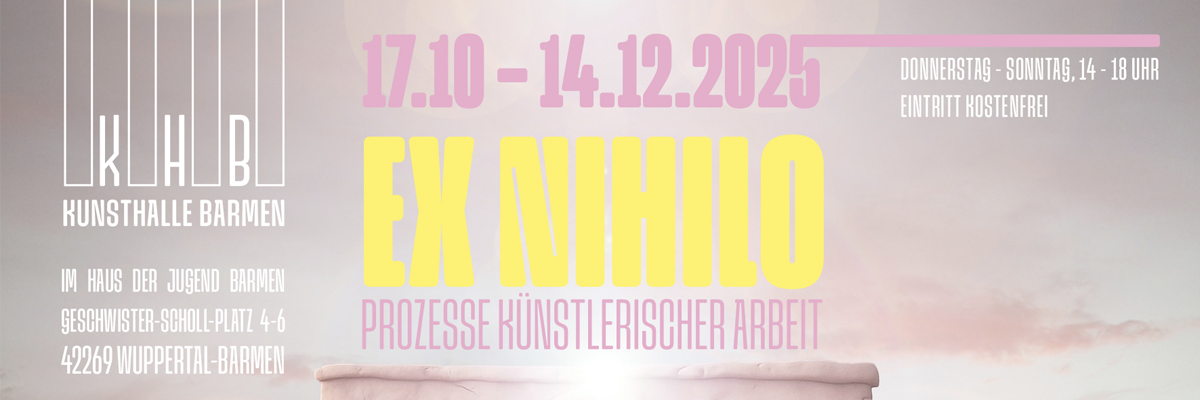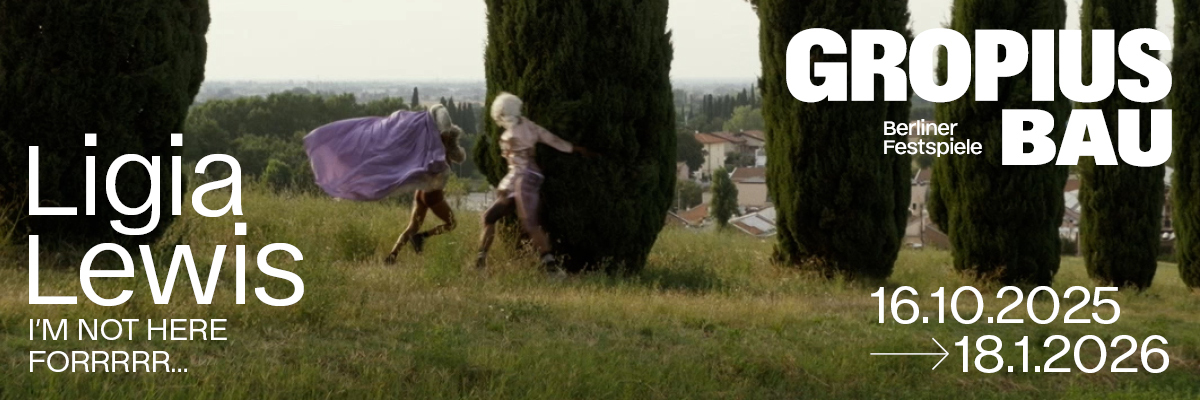
Clara Bahlsen
Magical Rage
Project Info
- 💙 Villa Heike Kunstverein
- 💚 Sarie Nijboer, Michael Schäfer
- 🖤 Clara Bahlsen
- 💜 Sarie Nijboer, Michael Schäfer
- 💛 Clara Bahlsen
Share on
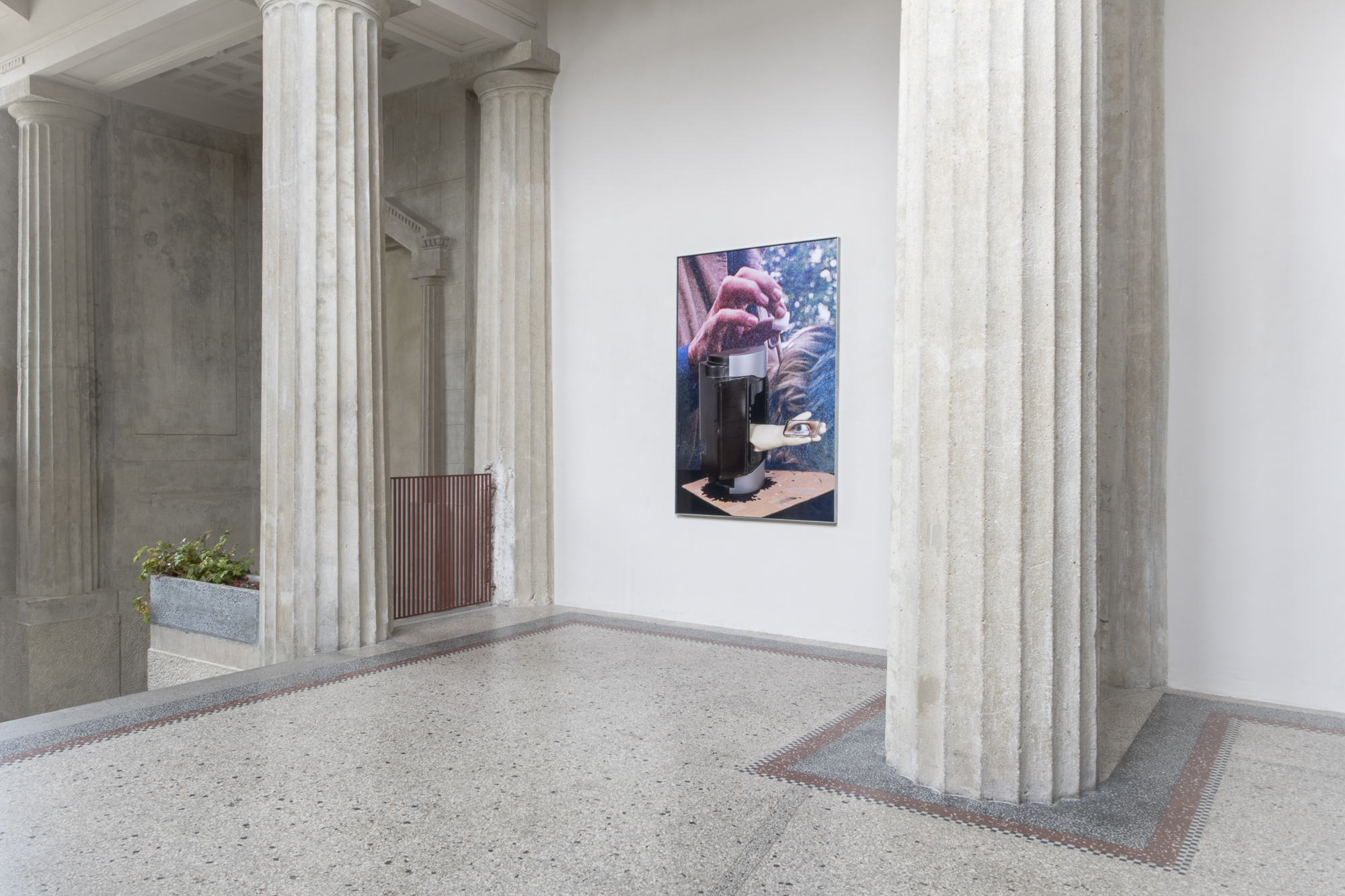
Ich sehe was, was du nicht siehst, Magical Rage, 2023, 160 x 106 cm, fine art inkjet print, hot-dip galvanized steel frame
Advertisement
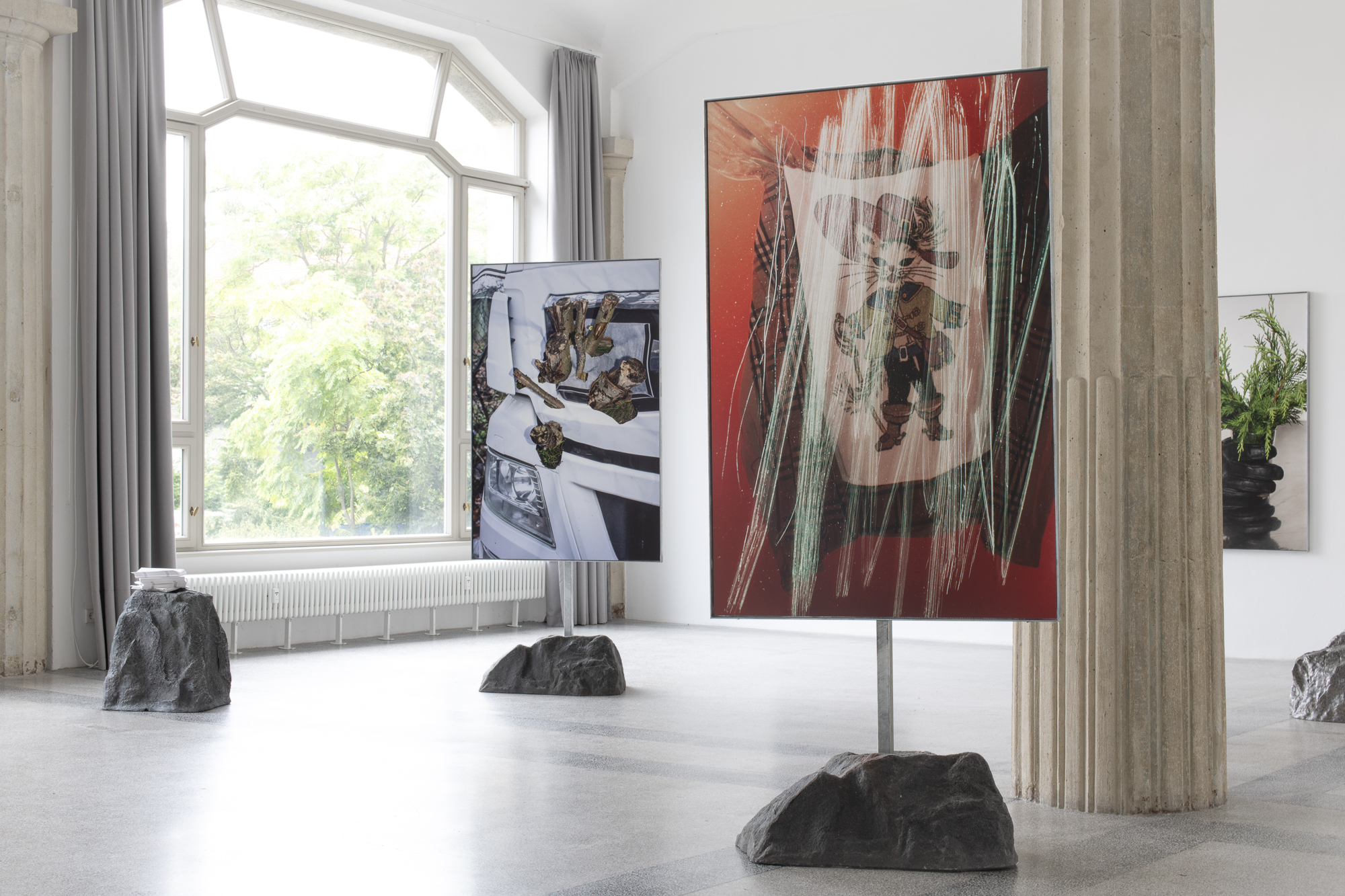
Väter, 2025, texts, artificial stone; Vergiß es, Magical Rage, 2024 & Der Kater wird die Zaubermaus fressen, Magical Rage, 2024, 160 x 106 cm, fine art inkjet prints, hot-dip galvanized steel frames, steel rods, artificial stones
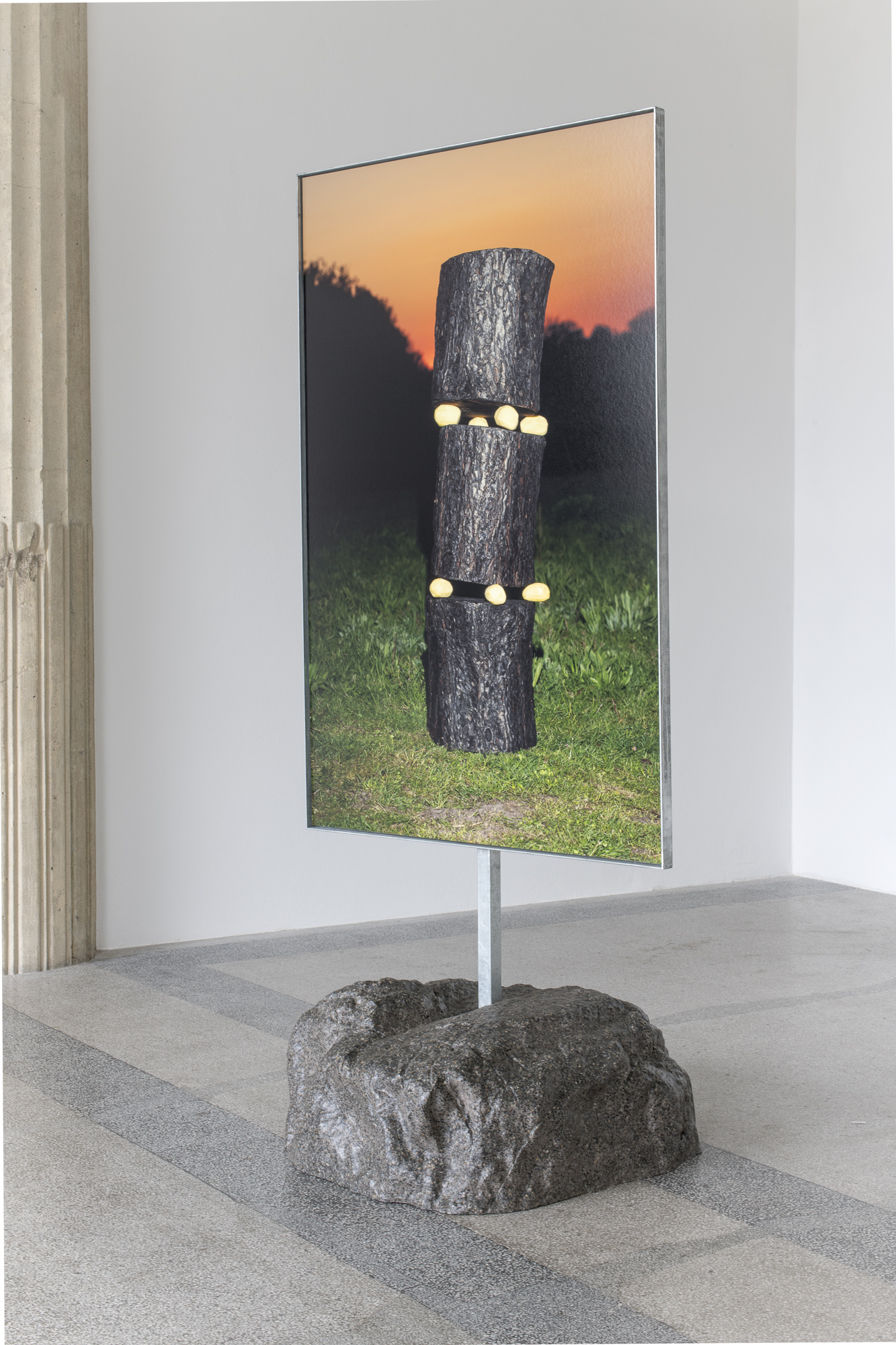
Knappe Angelegenheit, Magical Rage, 2025, 160 x 106 cm, fine art inkjet print, hot-dip galvanized steel frame, steel rod, artificial stone
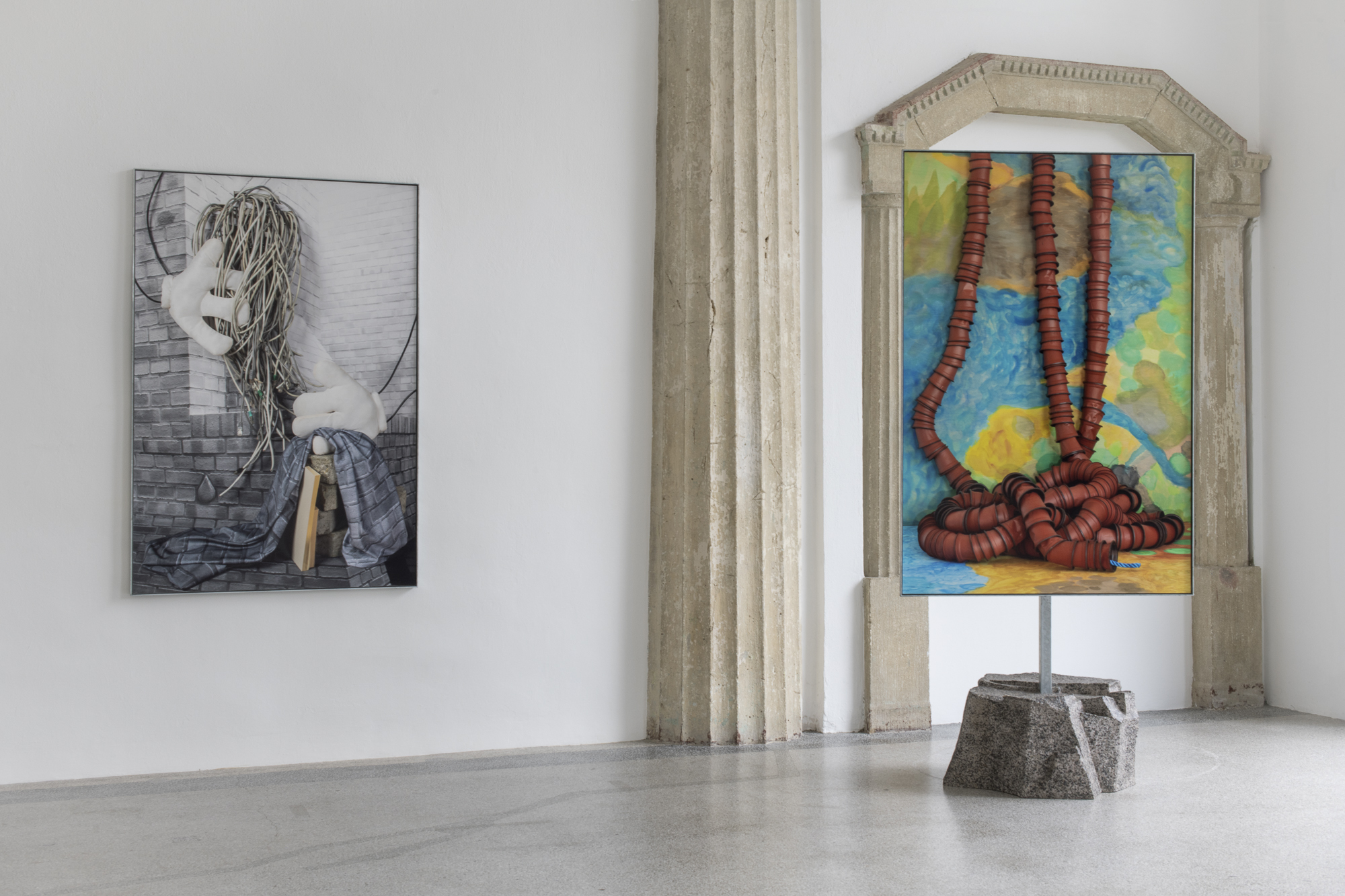
Moses reißt sich zusammen, Magical Rage, 2024, 160 x 106 cm, fine art inkjet print hot-dip galvanized steel frame; Irgendwo vergraben, Magical Rage, 2023, 160 x 106 cm, fine art inkjet print hot-dip galvanized steel frame, steel rod, artificial stone
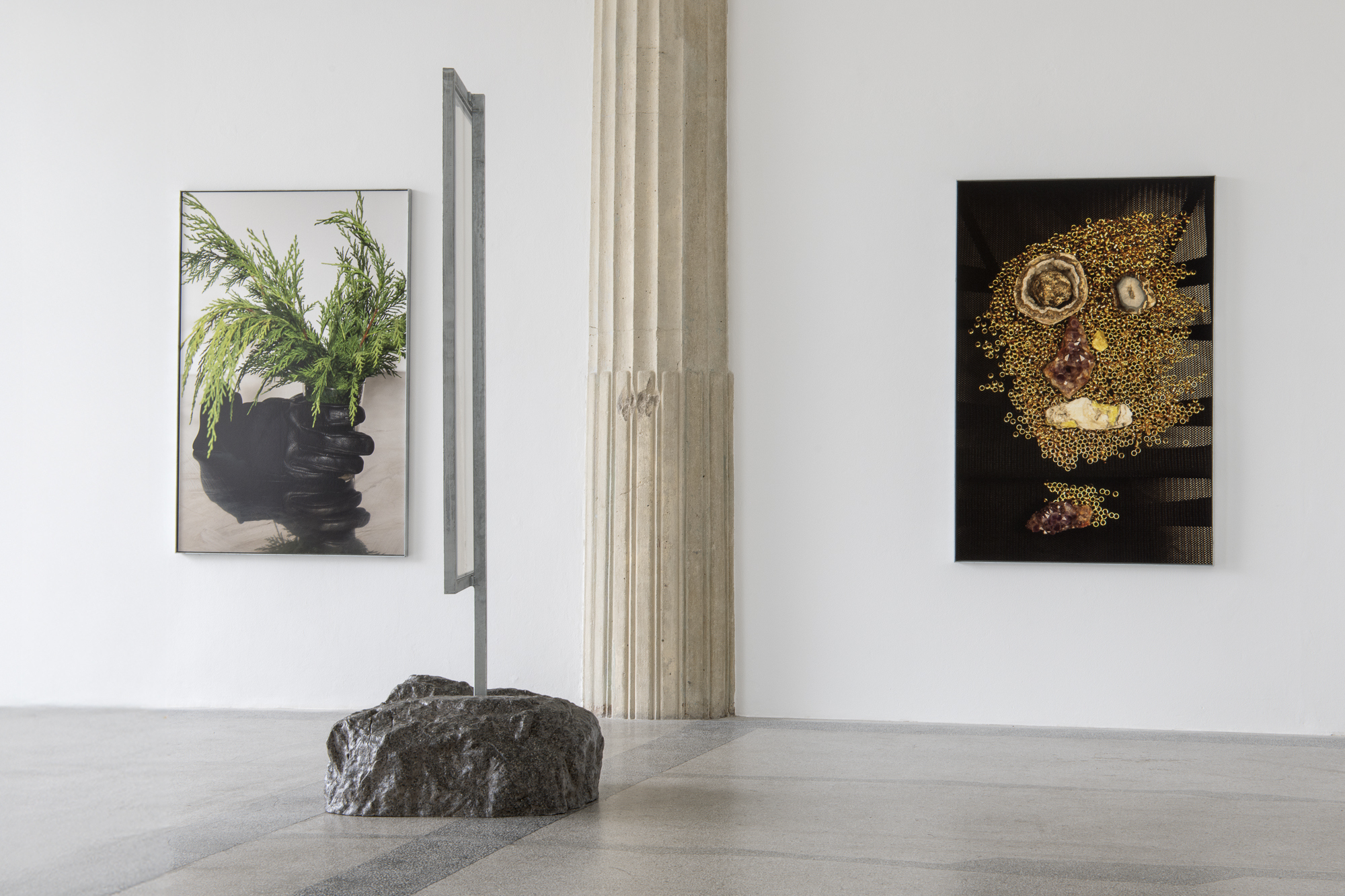
Erpressung, Magical Rage 2021, 160 x 106 cm, fine art inkjet print, hot-dip galvanized steel frame; Geist der Väter, Magical Rage, 2023, 160 x 106 cm, fine art inkjet print, hot-dip galvanized steel frame
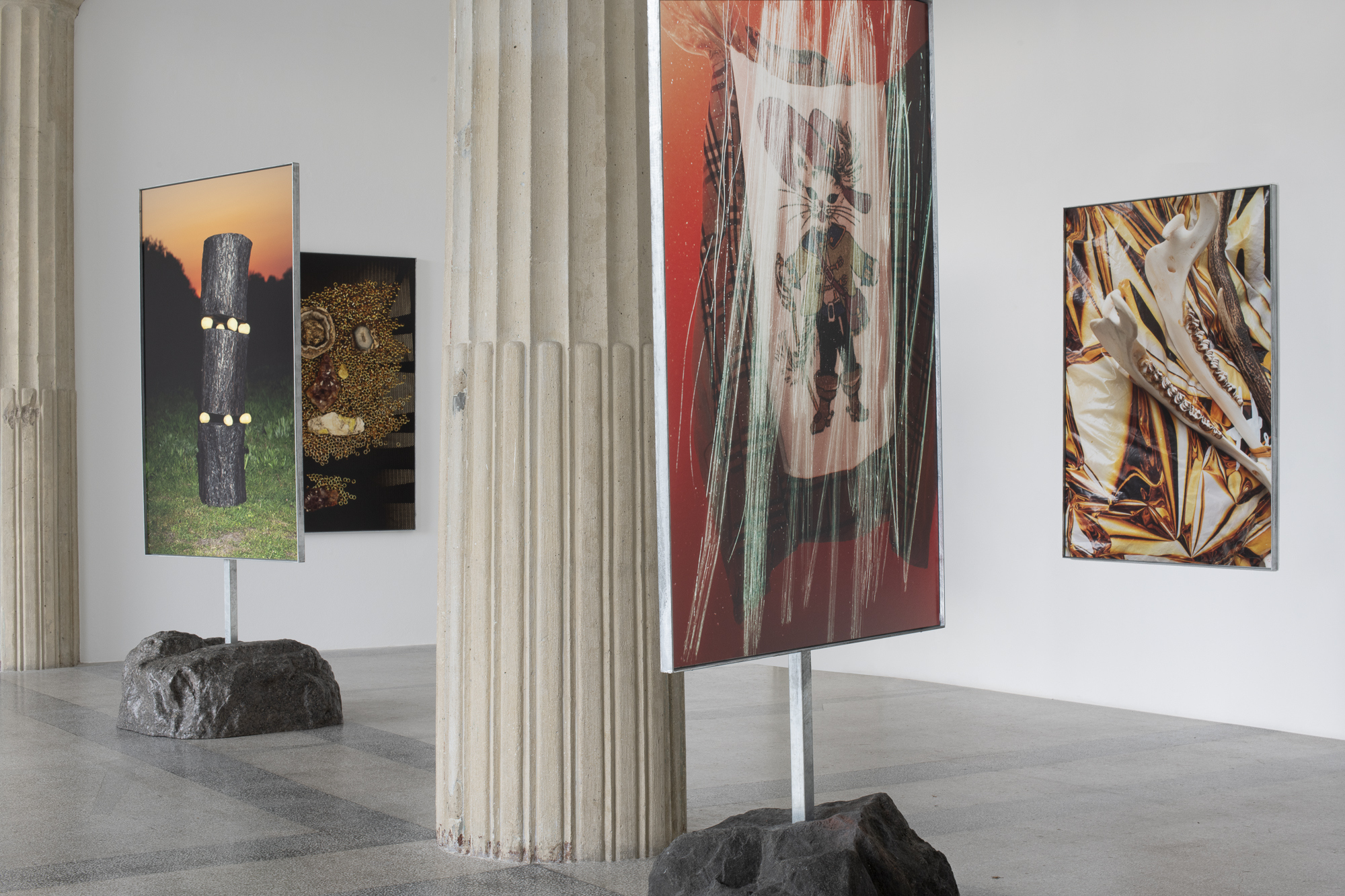
Knappe Angelegenheit, Magical Rage, 2025; Geist der Väter, Magical Rage, 2023; Der Kater wird die Zaubermaus fressen, Magical Rage, 2024; Meinungsverstärker, Magical Rage, 2015, 160x106 cm, fine art inkjet prints, hot-dip galvanized steel frames
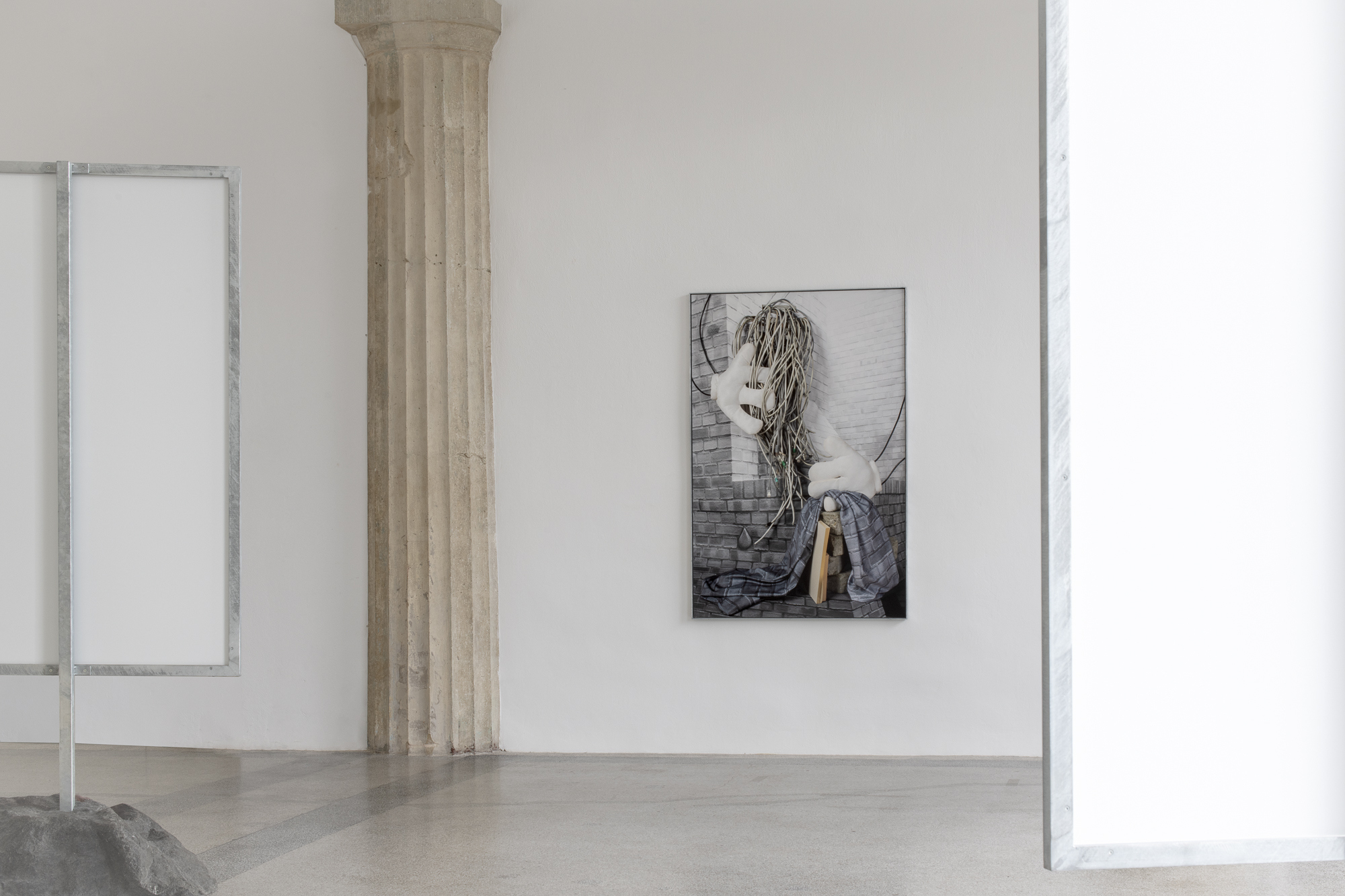
Moses reißt sich zusammen, Magical Rage, 2024, 160 x 106 cm, fine art inkjet prints, hot-dip galvanized steel frames
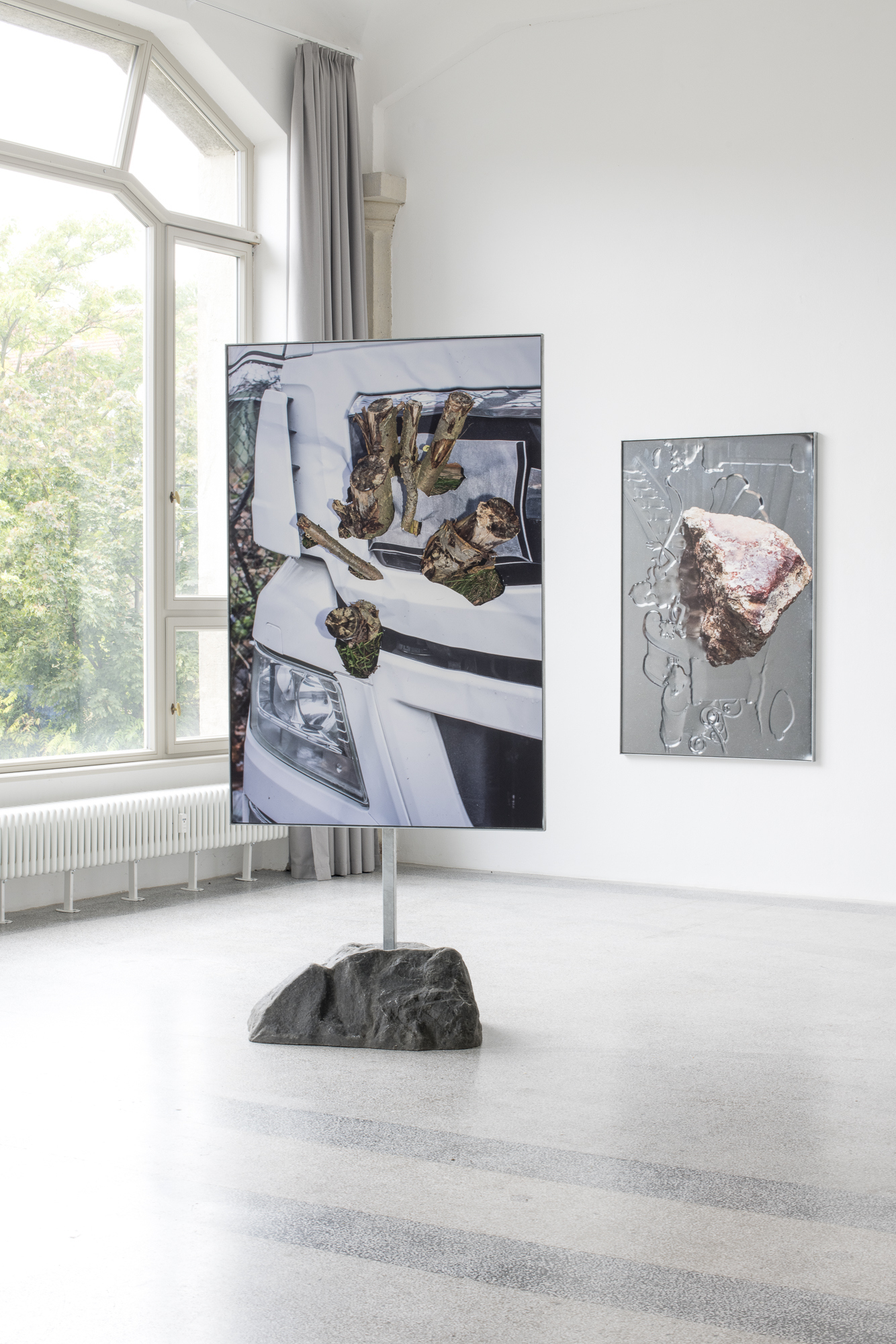
Vergiß es, Magical Rage, 2024, 160 x 106 cm, fine art inkjet print, hot-dip galvanized steel frame, steel rod, artificial stone; Cinderella, Magical Rage, 2021, 160 x 106 cm, fine art inkjet print, hot-dip galvanized steel frame
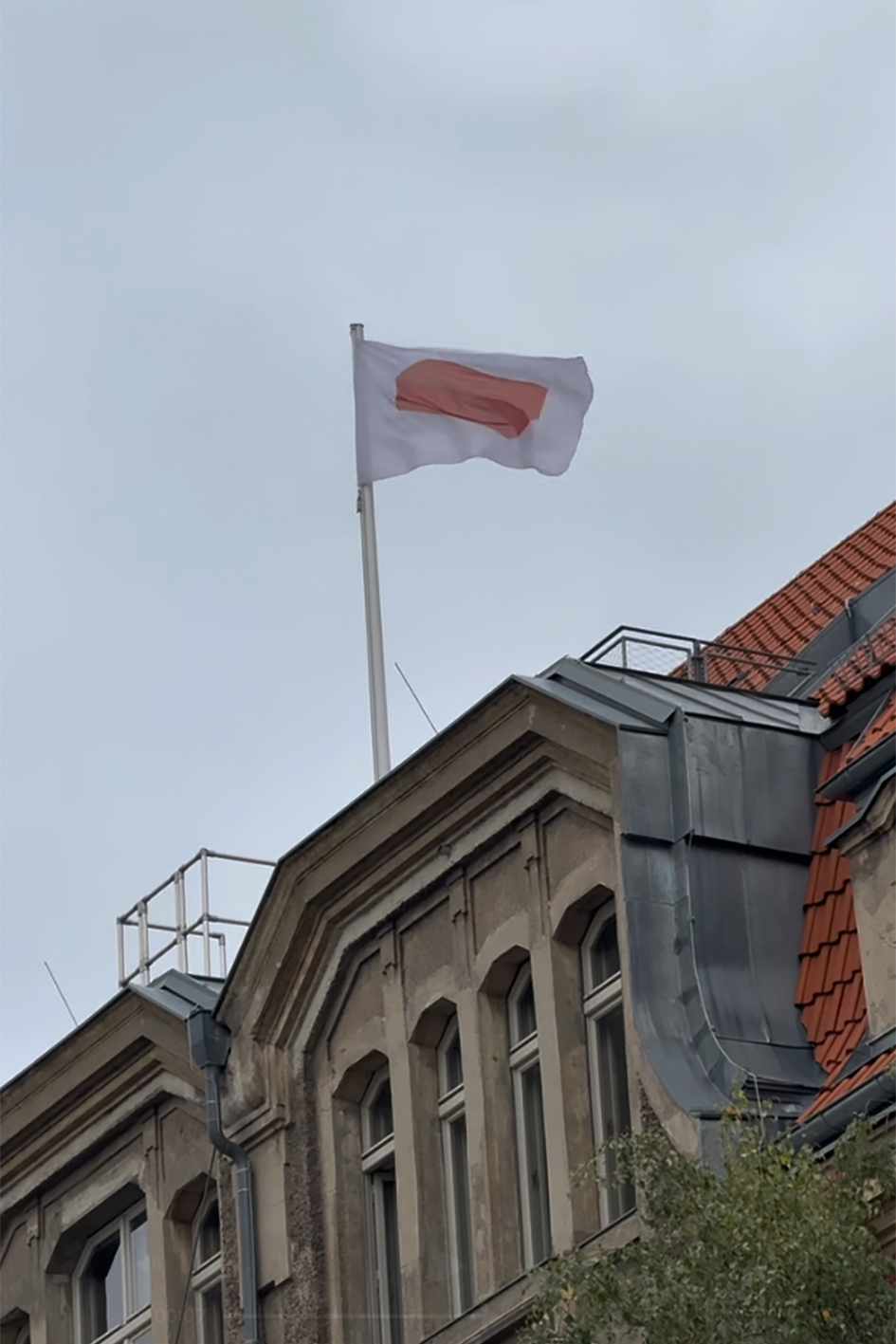
Backstein, 2025, 150 x 250 cm, flag
Clara Bahlsen
Magical Rage
The photographic series Magical Rage by Clara Bahlsen presents meticulously staged still lifes in which everyday objects—stones, rivets, potatoes, and tree trunks; an animal jawbone, or a printer and mobile phone—are removed from their usual context and brought together in dense, tension-filled arrangements. By placing these things into new, unexpected constellations, Bahlsen strips them of their everyday function, granting them instead a symbolic, almost allegorical quality. In the studio, Bahlsen stacks, balances, and stages the objects with one another so that they enter into precarious equilibria and contradictory relationships.
The conceptual foundation of Magical Rage draws on Freud’s notion of sublimation: the transformation of raw, often destructive impulses into culturally valued forms. Freud’s 1904 essay on Michelangelo’s Moses serves as a reference point: Moses restrains his rage against the idolatrous people and protects the tablets of the law rather than shattering them in anger. For Bahlsen, this image of sublimated rage—anger held back in favor of a higher responsibility—becomes a conceptual touchstone for her own translation of affect.
Here, photography becomes a medium of psychic transference. The staged objects condense gestures, affects, and latent conflicts into forms that both reveal and conceal. At times, the arrangements appear archival, like fragments of a private mythology pointing to a story that cannot be fully told. They elude any final interpretation because Bahlsen combines things in such a way that they oscillate within ambivalent fields of meaning. The images thus function as stand-ins for psychic energies that are neither easily named nor entirely hidden.
Some photographs hang on the wall in raw metal frames, while others stand freely in space, affixed to a metal pole anchored in an artificial stone. In line with the visual traps of the images and their mythic or artificial-seeming object constellations, the pedestals themselves turn out to be illusions. They underscore the constructedness of the pictorial arrangements in the still lifes and consistently carry Bahlsen’s artistic approach into the exhibition space.
Alongside the photographs, accompanying autofictional short texts provide fragmentary glimpses into family dynamics and the memories they evoke. Like the photographic still lifes, these texts work with allusions, ruptures, and blanks. They resist linear narration and allow anger to emerge as a complex and ambivalent phenomenon that cannot be clearly defined or resolved. Together, the photographs and texts form a dialogue in which visual and verbal registers mirror one another, tracing the latent energies of rage across different levels.
In a world marked by polarization and emotional loss of control, Magical Rage opens a field of tension in which the layered complexities of inner conflict are brought into relation, and rage as a raw, contradictory emotional state is translated into an enigmatic visual language.
Sarie Nijboer, Michael Schäfer
